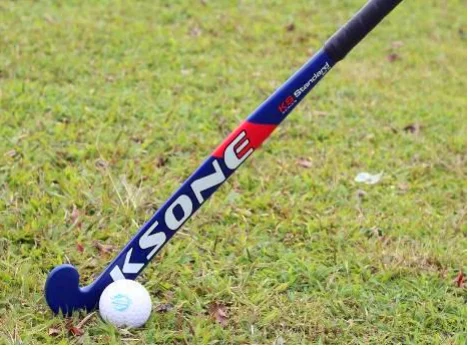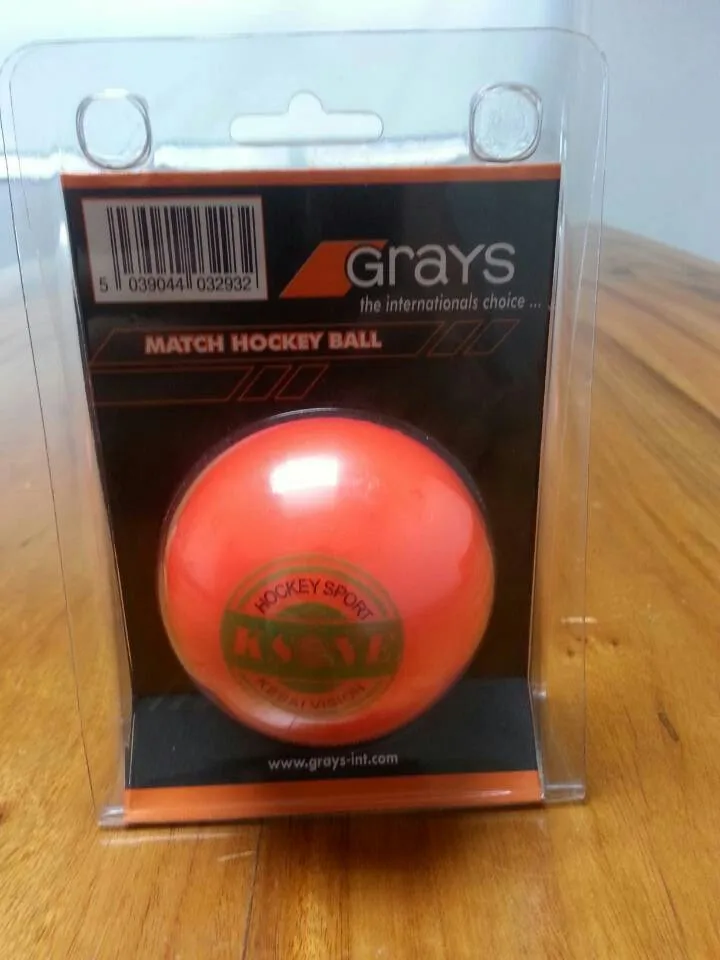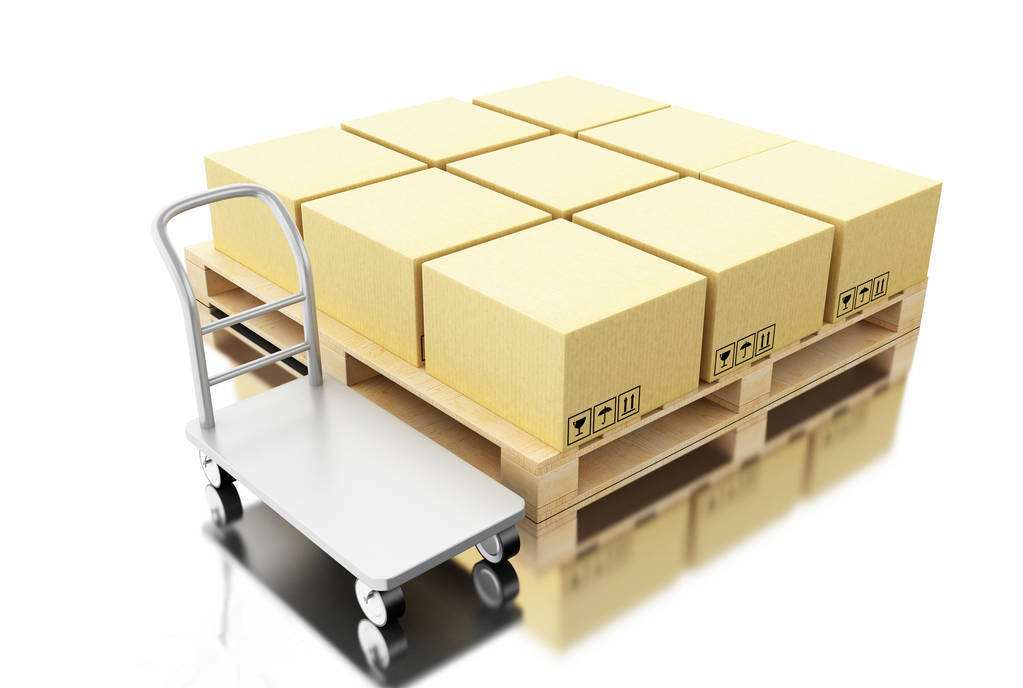The durability of paper prints usually refers to the durability of the paper and ink used for printing. This article focuses on the durability of the paper used for printing. The durability of paper refers to the extent to which the paper can retain its color and fold-resistance properties over a long period of time. For printing paper, durability expresses the life of the paper print or the longest time it can hold. To understand, understand, and even predict the durability of paper, you can choose the paper based on the shelf life of the print. Especially for folding carton paper, try to avoid the phenomenon that the inner package has not expired and the paper has yellowed. The time it takes for the paper to yellow back to a certain degree or when the folding endurance is reduced to a certain degree is called the durability of the paper.
There are many factors that affect the durability of paper, including the type of pulp used in papermaking, the content of rubber, paint, acid and metal compounds, and the temperature, humidity, light, etc. during storage or use.
1 Main Factors Affecting Paper Durability
The durability of paper is determined by both internal and external factors. The internal factors include the type and quality of the pulp, the contents of the rubber, paint, acid and metal compounds, and other ingredients in the paper sheet, all of which are determined by the pulp and paper process. External factors refer to the conditions for storage or use of paper, such as temperature, relative humidity, light, and atmospheric pollution.
1) The effect of the degree of washing of the residual lignin and pulp in the pulp, the number of bleached segments, and the method on the durability of the paper
The residual lignin content in the pulp, the degree of washing of the pulp, the number of bleached segments, and the method all significantly affect the stability of the whiteness of the paper. Unlike lignin and hemicellulose linear molecules, lignin is a three-dimensional network macromolecular structure whose molecular formula is represented by C138H138O35. Lignin is a harmful component in paper. Lignin remains in the paper and makes it brittle. The mechanical strength is reduced. After being exposed to sunlight, it will show yellowish-brown lignin and affect the whiteness of the paper. Lignin can be dissolved in acid and alkaline solutions and can decompose under the action of various oxidants. In the pulping process of papermaking, utilizing this property, cellulose and hemicellulose in raw materials can be preserved as much as possible, and lignin can be removed. The reason why newsprint is yellowing quickly is that the groundwood used does not remove the lignin from the wood raw materials, and it is generally not subjected to bleaching or only a single stage of hydrogen peroxide bleaching.
2) The effect of paper pH on the durability of paper
The results of the study indicate that the pH of the paper itself is the most important factor affecting the durability of the paper. If the pH of the paper is low, excessive acidity in the paper can accelerate cellulose degradation. In acid paper, hydrogen ions promote the breaking of the "oxygen bridge" of cellulose macromolecules and promote the hydrolysis and oxidation of cellulose, and these effects are relatively strong. The paper prints will be seriously discolored, and the stronger the acidity, the more serious this phenomenon will be. The acidity of paper may come from a variety of sources, but one of the most important sources is the alum used in sizing. Alum hydrolysis results in the formation of sulfuric acid in the paper. As a result, nowadays, it is required to use a neutral sizing method that does not include alum, since it is manufactured with a good durability. Acidic sources in paper are also pulping and bleaching. Papers made from sulfite pulps are not as durable as papers made from kraft pulp because of the low pH value and the special effects of acidic cooking conditions on the plant fibers; if the residual chlorine content in the bleached pulp is high, the paper pulp The chloride ion reacts with water to produce hydrochloric acid and hypochlorous acid, which causes the pH of the paper to be lower and the durability of the paper to decrease.
For high-pH papers, strong alkalinity is also not conducive to improving the service life of the paper, because cellulose will accelerate its oxidative degradation at a higher alkaline condition. Therefore, for printing paper, strong acid and strong alkaline have a great destructive effect on the durability of the printed matter.
3) Effect of Fiber Types and Quality Used in Papermaking on Durability of Paper
The type and quality of fibers used in papermaking are also an important factor in determining the durability of the paper. Fibers derived from cotton, rags, linens, sandalwood, etc., can be used as raw materials for making durable paper because of the high cellulose content of pulp produced from these raw materials and the high degree of polymerization of cellulose. . Grass pulp fiber is just the opposite, so it should not be used to make durable paper.
Cellulose is a white, odorless, odorless carbohydrate, insoluble in water and dilute acids, dilute alkalis, and general organic solvents, but it can be hydrolyzed under the action of concentrated sulphuric acid, chemical formula (C6H10O5). It is a chain polymer compound composed of a large amount of glucosyl groups. The strength of cellulose is determined by the degree of polymerization. The greater the degree of polymerization, the greater the strength. The degree of polymerization of bast fibers is higher, followed by cotton fibers, followed by wood fibers and grass fibers. Therefore, paper made from cotton and hemp fibers has higher mechanical strength than paper made from grass fibers. High degree of polymerization of cotton, hemp fiber, used to make high-grade paper.
4) The effect of various additives in paper on the durability of paper
The presence of added materials in paper, such as various sizes, fillers, pigments, and various other additives, also affect the chemical stability and durability of the paper to some extent.
1 filler. The whiteness of fillers varies greatly depending on their type and grade. If fillers with higher whiteness than the slurry are used, the greater the amount of filler, the higher the whiteness of the paper.
2 dyes. Each dye has a certain characteristic wavelength at which it absorbs most light, which is the so-called maximum absorption wavelength. When selecting a dye, the dye should be made to have no influence on the reflectance near the wavelength of the light measuring the whiteness, and it can both correct the color of the paper without significantly affecting the whiteness of the paper.
3 slurry. Slurry whiteness is the most important factor affecting paper whiteness. High-grade paper made using 100% bleached pulp, and high-grade paint printing paper using it as a base paper have whiteness of about 80%. In contrast, the whiteness of medium- and middle-grade paint printing papers equipped with mechanical pulp will be lower, and the whiteness of such papers will depend on the whiteness of the used pulp and the ratio of the pulp.
4 coating. The whiteness of the paint printing paper is determined by the whiteness of the base paper, the whiteness of the paint, and the coating amount. If the whiteness of the base paper is higher than that of the coating, some of the light that passes through the coating will be reflected back by the surface of the base paper and reflected again through the surface of the deep coating, and the whiteness may also be increased. If the whiteness of the base paper is low, the amount of light absorbed by the surface of the base paper increases, and the light reflected by the coating is reduced, thereby reducing the whiteness of the coated surface. Of course, when the coating layer is completely opaque, the whiteness of the coated paper is not affected by the base paper. However, the thickness and light transmission performance of the coating layer determine that it does not have the ability to completely cover the whiteness of the base paper, so the whiteness of the base paper also affects the whiteness of the coated paper.
If titanium dioxide is added to the paint, the pigment with high whiteness and high opacity can not only increase the whiteness of the coating itself, but also because the high opacity covers the original color of the base paper, the coating layer can be used. The whiteness of the surface is further improved.
To increase the whiteness of the paper, the most important thing is to use a pulp with a higher whiteness, that is, to increase the bleaching of the pulp. Secondly, to choose a good filler, when the whiteness of the filler is higher than the whiteness of the fiber component, it can dilute the yellow color of the pulp and significantly increase the whiteness of the paper. The whiteness of the filler has a great difference according to its type and grade. The higher the whiteness of the selected filler than the pulp, the greater the added amount, the more obvious the whiteness of the paper is.
Whether coated or uncoated, fluorescent whitening agents can be added to the pulp or coating to increase the whiteness of the paper. This is because the fluorescent whitening agent absorbs invisible ultraviolet light and converts the ultraviolet light into blue light of 450 nm, thereby increasing the blue light reflectance and increasing the whiteness value. However, fluorescent whitening agents have very weak whitening effects on slurries and coatings with low whiteness. This is because UV light is absorbed by heavily colored fibers or coatings and cannot be converted to visible light.
In the production of non-coated paper, a small amount of blue, lake blue or magenta is often added to the paper stock after adding glue, twisting and filling to achieve the purpose of whitening. Adding a small amount of blue-purple or red-blue dye to the pulp can absorb a yellow or orange-yellow spectrum of 500-600 nm, so that the slightly yellowish pulp disappears, even slightly blue or slightly reddish. After such treatment, the whiteness of the paper measured by whiteness does not increase, but the human eye looks white. This is because the dye added does not enhance the reflected light of the paper but absorbs a part of the yellow light to be reflected. Therefore, when viewed with the naked eye, the whiteness of the paper is somewhat improved.
2 How to improve the durability of paper
In general, there are several ways to improve the durability of paper:
1) In order to improve light stability, addition of papermaking additives (such as calcium carbonate, titanium white, zinc white), anti-UV agents, fluorescent whitening agents, etc. can all prevent whiteness from decreasing.
Plant fibers generally have their own color, so the production of white paper must be added whitening agent to improve the whiteness of the paper, and fillers such as calcium carbonate, titanium white, and zinc white, which are generally used for paper, are all white pigments. Can increase the whiteness of the paper. The increase in whiteness depends partly on the whiteness of the filler and partly on the particle size and hiding power of the pigment. The whiteness of the paper also depends on the whiteness of the pulp and the degree of pulping. If these fillers are added to a high brightness slurry, the increase in filler will be less effective.
2 Change papermaking raw materials, such as changing softwood and hardwood to non-wood fiber. Fibers derived from cotton, rags, linens, sandalwood, etc. have a high cellulose content in the pulp and a high degree of polymerization of cellulose, which can be used to make durable paper.
3 Correct use of paper can also improve the durability of the paper. The durability of paper has a lot to do with the conditions of storage. Therefore, the temperature, humidity, and lighting of the product packaging box, books, and document storage environment must be strictly controlled. The temperature is preferably 12 to 25°C. Higher temperatures will cause more damage to the cellulose by a small amount of chemicals (such as certain acidic substances) in the paper. If the temperature is too low, the moisture content in the paper will freeze. Causes the internal structure of the paper to be destroyed. The relative humidity should generally be 40% to 55% so that it is compatible with the moisture balance conditions of the paper.
There are many factors that affect the durability of paper, including the type of pulp used in papermaking, the content of rubber, paint, acid and metal compounds, and the temperature, humidity, light, etc. during storage or use.
1 Main Factors Affecting Paper Durability
The durability of paper is determined by both internal and external factors. The internal factors include the type and quality of the pulp, the contents of the rubber, paint, acid and metal compounds, and other ingredients in the paper sheet, all of which are determined by the pulp and paper process. External factors refer to the conditions for storage or use of paper, such as temperature, relative humidity, light, and atmospheric pollution.
1) The effect of the degree of washing of the residual lignin and pulp in the pulp, the number of bleached segments, and the method on the durability of the paper
The residual lignin content in the pulp, the degree of washing of the pulp, the number of bleached segments, and the method all significantly affect the stability of the whiteness of the paper. Unlike lignin and hemicellulose linear molecules, lignin is a three-dimensional network macromolecular structure whose molecular formula is represented by C138H138O35. Lignin is a harmful component in paper. Lignin remains in the paper and makes it brittle. The mechanical strength is reduced. After being exposed to sunlight, it will show yellowish-brown lignin and affect the whiteness of the paper. Lignin can be dissolved in acid and alkaline solutions and can decompose under the action of various oxidants. In the pulping process of papermaking, utilizing this property, cellulose and hemicellulose in raw materials can be preserved as much as possible, and lignin can be removed. The reason why newsprint is yellowing quickly is that the groundwood used does not remove the lignin from the wood raw materials, and it is generally not subjected to bleaching or only a single stage of hydrogen peroxide bleaching.
2) The effect of paper pH on the durability of paper
The results of the study indicate that the pH of the paper itself is the most important factor affecting the durability of the paper. If the pH of the paper is low, excessive acidity in the paper can accelerate cellulose degradation. In acid paper, hydrogen ions promote the breaking of the "oxygen bridge" of cellulose macromolecules and promote the hydrolysis and oxidation of cellulose, and these effects are relatively strong. The paper prints will be seriously discolored, and the stronger the acidity, the more serious this phenomenon will be. The acidity of paper may come from a variety of sources, but one of the most important sources is the alum used in sizing. Alum hydrolysis results in the formation of sulfuric acid in the paper. As a result, nowadays, it is required to use a neutral sizing method that does not include alum, since it is manufactured with a good durability. Acidic sources in paper are also pulping and bleaching. Papers made from sulfite pulps are not as durable as papers made from kraft pulp because of the low pH value and the special effects of acidic cooking conditions on the plant fibers; if the residual chlorine content in the bleached pulp is high, the paper pulp The chloride ion reacts with water to produce hydrochloric acid and hypochlorous acid, which causes the pH of the paper to be lower and the durability of the paper to decrease.
For high-pH papers, strong alkalinity is also not conducive to improving the service life of the paper, because cellulose will accelerate its oxidative degradation at a higher alkaline condition. Therefore, for printing paper, strong acid and strong alkaline have a great destructive effect on the durability of the printed matter.
3) Effect of Fiber Types and Quality Used in Papermaking on Durability of Paper
The type and quality of fibers used in papermaking are also an important factor in determining the durability of the paper. Fibers derived from cotton, rags, linens, sandalwood, etc., can be used as raw materials for making durable paper because of the high cellulose content of pulp produced from these raw materials and the high degree of polymerization of cellulose. . Grass pulp fiber is just the opposite, so it should not be used to make durable paper.
Cellulose is a white, odorless, odorless carbohydrate, insoluble in water and dilute acids, dilute alkalis, and general organic solvents, but it can be hydrolyzed under the action of concentrated sulphuric acid, chemical formula (C6H10O5). It is a chain polymer compound composed of a large amount of glucosyl groups. The strength of cellulose is determined by the degree of polymerization. The greater the degree of polymerization, the greater the strength. The degree of polymerization of bast fibers is higher, followed by cotton fibers, followed by wood fibers and grass fibers. Therefore, paper made from cotton and hemp fibers has higher mechanical strength than paper made from grass fibers. High degree of polymerization of cotton, hemp fiber, used to make high-grade paper.
4) The effect of various additives in paper on the durability of paper
The presence of added materials in paper, such as various sizes, fillers, pigments, and various other additives, also affect the chemical stability and durability of the paper to some extent.
1 filler. The whiteness of fillers varies greatly depending on their type and grade. If fillers with higher whiteness than the slurry are used, the greater the amount of filler, the higher the whiteness of the paper.
2 dyes. Each dye has a certain characteristic wavelength at which it absorbs most light, which is the so-called maximum absorption wavelength. When selecting a dye, the dye should be made to have no influence on the reflectance near the wavelength of the light measuring the whiteness, and it can both correct the color of the paper without significantly affecting the whiteness of the paper.
3 slurry. Slurry whiteness is the most important factor affecting paper whiteness. High-grade paper made using 100% bleached pulp, and high-grade paint printing paper using it as a base paper have whiteness of about 80%. In contrast, the whiteness of medium- and middle-grade paint printing papers equipped with mechanical pulp will be lower, and the whiteness of such papers will depend on the whiteness of the used pulp and the ratio of the pulp.
4 coating. The whiteness of the paint printing paper is determined by the whiteness of the base paper, the whiteness of the paint, and the coating amount. If the whiteness of the base paper is higher than that of the coating, some of the light that passes through the coating will be reflected back by the surface of the base paper and reflected again through the surface of the deep coating, and the whiteness may also be increased. If the whiteness of the base paper is low, the amount of light absorbed by the surface of the base paper increases, and the light reflected by the coating is reduced, thereby reducing the whiteness of the coated surface. Of course, when the coating layer is completely opaque, the whiteness of the coated paper is not affected by the base paper. However, the thickness and light transmission performance of the coating layer determine that it does not have the ability to completely cover the whiteness of the base paper, so the whiteness of the base paper also affects the whiteness of the coated paper.
If titanium dioxide is added to the paint, the pigment with high whiteness and high opacity can not only increase the whiteness of the coating itself, but also because the high opacity covers the original color of the base paper, the coating layer can be used. The whiteness of the surface is further improved.
To increase the whiteness of the paper, the most important thing is to use a pulp with a higher whiteness, that is, to increase the bleaching of the pulp. Secondly, to choose a good filler, when the whiteness of the filler is higher than the whiteness of the fiber component, it can dilute the yellow color of the pulp and significantly increase the whiteness of the paper. The whiteness of the filler has a great difference according to its type and grade. The higher the whiteness of the selected filler than the pulp, the greater the added amount, the more obvious the whiteness of the paper is.
Whether coated or uncoated, fluorescent whitening agents can be added to the pulp or coating to increase the whiteness of the paper. This is because the fluorescent whitening agent absorbs invisible ultraviolet light and converts the ultraviolet light into blue light of 450 nm, thereby increasing the blue light reflectance and increasing the whiteness value. However, fluorescent whitening agents have very weak whitening effects on slurries and coatings with low whiteness. This is because UV light is absorbed by heavily colored fibers or coatings and cannot be converted to visible light.
In the production of non-coated paper, a small amount of blue, lake blue or magenta is often added to the paper stock after adding glue, twisting and filling to achieve the purpose of whitening. Adding a small amount of blue-purple or red-blue dye to the pulp can absorb a yellow or orange-yellow spectrum of 500-600 nm, so that the slightly yellowish pulp disappears, even slightly blue or slightly reddish. After such treatment, the whiteness of the paper measured by whiteness does not increase, but the human eye looks white. This is because the dye added does not enhance the reflected light of the paper but absorbs a part of the yellow light to be reflected. Therefore, when viewed with the naked eye, the whiteness of the paper is somewhat improved.
2 How to improve the durability of paper
In general, there are several ways to improve the durability of paper:
1) In order to improve light stability, addition of papermaking additives (such as calcium carbonate, titanium white, zinc white), anti-UV agents, fluorescent whitening agents, etc. can all prevent whiteness from decreasing.
Plant fibers generally have their own color, so the production of white paper must be added whitening agent to improve the whiteness of the paper, and fillers such as calcium carbonate, titanium white, and zinc white, which are generally used for paper, are all white pigments. Can increase the whiteness of the paper. The increase in whiteness depends partly on the whiteness of the filler and partly on the particle size and hiding power of the pigment. The whiteness of the paper also depends on the whiteness of the pulp and the degree of pulping. If these fillers are added to a high brightness slurry, the increase in filler will be less effective.
2 Change papermaking raw materials, such as changing softwood and hardwood to non-wood fiber. Fibers derived from cotton, rags, linens, sandalwood, etc. have a high cellulose content in the pulp and a high degree of polymerization of cellulose, which can be used to make durable paper.
3 Correct use of paper can also improve the durability of the paper. The durability of paper has a lot to do with the conditions of storage. Therefore, the temperature, humidity, and lighting of the product packaging box, books, and document storage environment must be strictly controlled. The temperature is preferably 12 to 25°C. Higher temperatures will cause more damage to the cellulose by a small amount of chemicals (such as certain acidic substances) in the paper. If the temperature is too low, the moisture content in the paper will freeze. Causes the internal structure of the paper to be destroyed. The relative humidity should generally be 40% to 55% so that it is compatible with the moisture balance conditions of the paper.
PVC Smooth Indoor Hockey Ball
Product Description
An excellent quality dimpled ball molded with stand out colors. Suitable for matches and training on all surfaces. Volume discount available. Available in two colors, orange or white.
| Function: | Indoor hockey (smooth floor) |
| Material: | PVC |
| Color: | White/Orange |
| Size: | 71mm in Diameter |
| Logo: | Customizable |
| MOQ: | 500 pieces |
| Sample Time: | (1) 7 working days-If need customized logo. |
| (2) Within 1working days- for existing samples | |
| OEM Service: | Yes |
| Certification Available: | Yes |
| Packing details: | 120PCS/CTN |
Dimple Hockey Ball
Weight :between 156-- 163 grams
Diameter:73±1mm
Surface: Dimple/smooth
Q'TY/CTN:120/PC
MEANS(CM): 52*38*39.5cm

·2014 Holland Hockey World Cup Authorized Supplier
·Smooth Ball, Better Performance on Indoor Floor

·Individual Packaging
Our company
Fayyou Sport Co., Ltd.,subsidiary of Zhuhai Kesai Co Ltd. founded in 1997, is specialized in producing and promoting sports products including lacrosse,hockey, crossfit and massage products.
Kesai has professional experience in manufacturing, marketing and shipping, providing multiple services. Fayyou Sport was established in 2015 due to increasing sports business volume.
Shipping

Packing

Hockey Ball
Massage Spiky Ball,Roller Spiky Ball,Spiky Massage Ball,Rolling Massage Ball
FAY YOU SPORTS CO.,LTD , http://www.ksonelacrosse.com